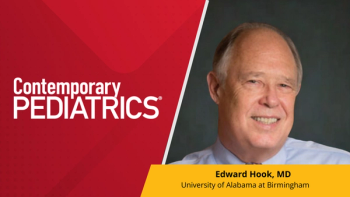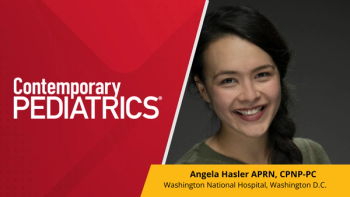
Frequent perinatal antibiotic use and impaired lung function in preterm-born children
"Early identification of high-risk neonates may enable targeted strategies to support respiratory health," stated the study investigators.
Results from a new German Neonatal Network (GNN) study published on May 12, 2025, in JAMA Network Open revealed that multiple episodes of perinatal antibiotic exposure were associated with impaired lung function in preterm-born children by early school age.1
Antibiotics and obstructive airway
According to the study investigators, led by Ingmar Fortmann, MD, animal models have previously suggested a link between early antibiotic exposure and airway disease. Similar associations have been observed in human observational studies, which identified links of prenatal antibiotic exposure and childhood asthma.1,2
"Preterm neonates may be exposed to antibiotics at different stages of medical care," wrote the investigators. "First, antenatal exposure occurs when pregnant individuals at imminent preterm delivery receive antibiotic therapies for various reasons, such as premature rupture of membranes, amnion infection syndrome, or any other (suspected) bacterial infection. Nevertheless, antibiotics are often overused in this context, leading to their use in conditions for which they are not indicated, including preeclampsia; hemolysis, elevated liver enzymes, and low platelet syndrome; or intrauterine growth restriction," they added.1
Since preterm neonates and infants are at an increased risk for chronic lung disease development compared to term-born infants, the investigators sought to determine if repeated exposure in preterm infants with very low birth weight (VLBW) is associated with impaired lung function between the ages of 5 to 7 years. Impaired lung function was defined as forced expiratory volume at 1 second (FEV1).
Study population
Using a population-based, multicenter cohort design, the study featured VLBW preterm neonates aged 22 weeks 0 days' gestation to 36 weeks 6 days' gestation (with a birth weight < 1500 g) from 58 GNN centers. The study period was from January 2009 to March 2017, with a standardized follow-up at 5 to 7 years of age. The post hoc analysis was restricted to participants born by cesarean delivery to assess the sequential outcomes of antibiotic exposures, reported the investigators.
With a primary outcome of FEV1 z score at 5 to 7 years of age, study groups were as follows:
- The low-risk group (ARS I) was exclusively exposed to surgical antimicrobial prophylaxis (SAP), given to the mother before delivery.
- The immediate-risk group (ARS II) was exposed to maternal SAP and postnatal antibiotic treatment of the neonate.
- The high-risk group (ARS III) group was additionally exposed to antenatal maternal treatment.
Study results and conclusion
There were 3109 VLBW preterm-born children with follow-up at 5 to 7 years that were born of cesarean delivery. Of this population, 292 were in ARS I, 1329 in ARS II, and 1488 in ARS III. Results demonstrated that higher ARS levels were associated with lower FEV1 scores at early school ages:
- ARS II vs ARS I: β, −0.31 (95% CI, −0.59 to −0.02 [P = .03])
- ARS III vs ARS II: β, −0.27 (95% CI, −0.46 to −0.08 [P = .006])
Among secondary analysis of FVC z scores and childhood asthma episodes, results revealed higher antibiotic exposure levels of ARS III vs ARS II were associated with impaired z scores (β, −0.23; 95% CI, −0.43 to −0.03 [P = .02]). An increased risk of early childhood asthma episodes were also observed in the secondary analysis (odds ratio, 1.91; 95% CI, 1.32-2.76 [P = .001]).
"In this GNN cohort study, multiple episodes of perinatal antibiotic exposure were associated with impaired lung function in preterm-born children at early school age," the authors concluded. "Early identification of high-risk neonates may enable targeted strategies to support respiratory health and optimize long-term outcomes."
References:
1. Fortmann I, Welp A, Hoffmann N, et al. Perinatal Antibiotic Exposure and Respiratory Outcomes in Children Born Preterm. JAMA Netw Open. 2025;8(5):e259647. doi:10.1001/jamanetworkopen.2025.9647
2. Turi KN, Gebretsadik T, Ding T, et al. Dose, timing, and spectrum of prenatal antibiotic exposure and risk of childhood asthma. Clin Infect Dis. 2021;72(3):455-462. doi:10.1093/cid/ciaa085
Newsletter
Access practical, evidence-based guidance to support better care for our youngest patients. Join our email list for the latest clinical updates.








